This photo essay originally appeared in Yes! Magazine on January 08, 2016. Article and photography by Rucha Chitnis (@RuchaChitnis)
In northeastern India’s mountainous state of Meghalaya, youngest daughters inherit the land—and the ancient food heritage of their mothers.
At sunset, Bibiana Ranee sets out to gather wild edibles for dinner from the surrounding forest. She returns with bright bunches of greens. Jarainand jali are washed, sliced, sauteed, and served with a hearty pork stew, with raw tree tomato on the side. Ranee, 54, is proud of her ancestral roots: She’s a member of the Khasi tribe, which nestles high in the mountains of Meghalaya, a state in northeast India. All three major tribes of Meghalaya—Khasi, Garo, and Jaintia—are matrilineal. Children take the surname of the mother’s clan and girls inherit traditional lands—the youngest daughter typically receiving the largest share.
To reach her home in the village of Nongtraw in East Khasi Hills, Ranee must make her way down a steep mountain via some 2,500 meandering steps. Her front porch is adorned with rosy hues of amaranth, an ancient grain cultivated for more than 8,000 years. “When I was five years old, my mother took me to the fields,” Ranee says. “I learned about the foods in the fields and the forest from her.”
Across India, indigenous women step up to the plate in myriad ways: In Meghalaya, indigenous women are keepers of the seeds that form the foundation of their food sovereignty, a conscious choice by small food producers to define their unique food systems and culture. Indigenous women are also holders of traditional knowledge that enables them to gather medicinal plants and wild edibles in the surrounding forests, and gives them deep understanding of the ecology.
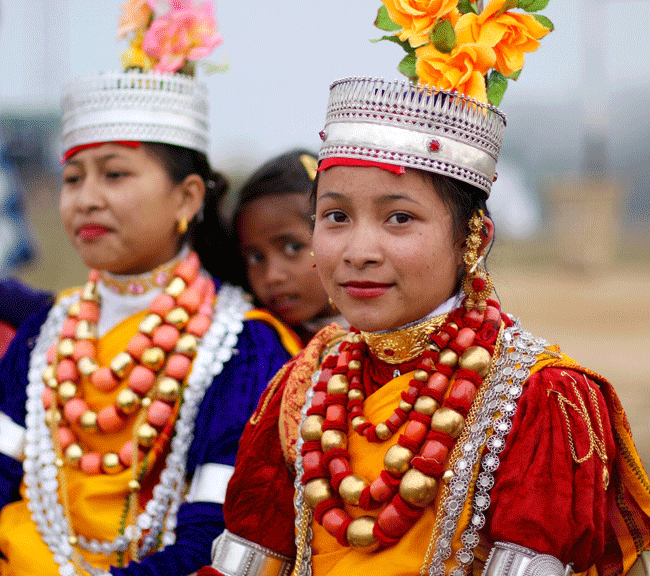
The Khasi tribe in the northeastern state of Meghalaya in India is matrilineal, where children take the last name of the mother’s clan. Unlike other parts of India, where women struggle to access land rights, Khasi women inherit land, the youngest daughter typically receiving the largest share.

Bibiana Ranee is proud of her Khasi lineage and indigenous roots. She is a strong advocate for local food systems and agrobiodiversity, where indigenous knowledge systems are preserved and celebrated.

“In matrilineal societies of Meghalaya like the Khasi, women are considered important partners like their male counterparts in any kinds of agrobiodiversity activities. If the land is ancestral or clan land, women are the custodian of such lands. Women have a distinctive part in the agrobiodiversity life and their contributions toward income generation and food security is recognized in Khasi society,” said Dr. A. K. Nongkynrih, Professor of Sociology at North-Eastern Hill University in Shillong, Meghalaya.
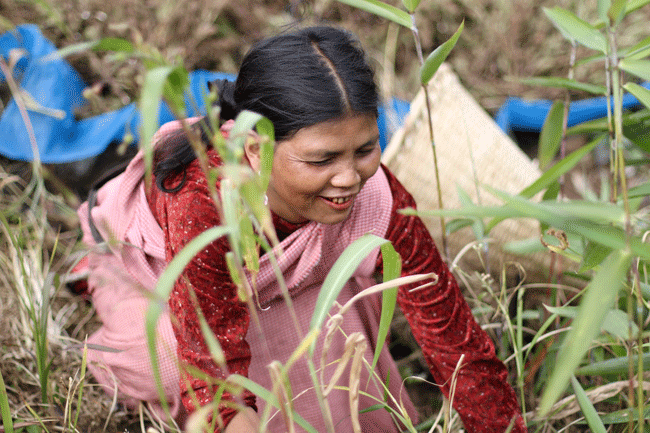
Karamela Khonglam grows more than 35 varieties of crops in her jhum field, an ancient shifting cultivation method practiced widely in northeast India. “Being from a matrilineal system, I am respected as a woman,” she says.
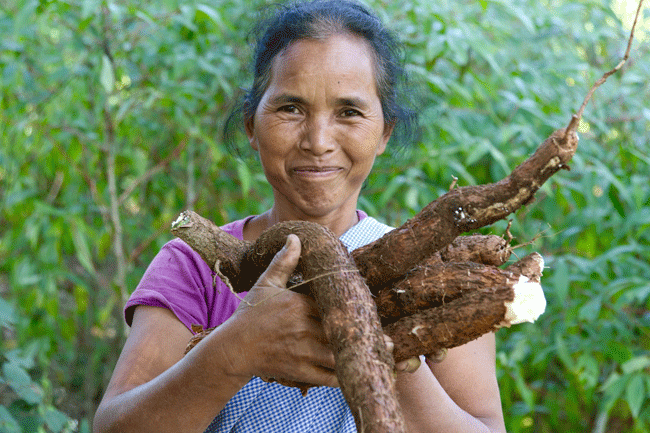
“There are ceremonies attached to the sowing and harvesting season. Each grain is seen as a blessing from nature and what is conserved naturally is often more treasured than those given by the agriculture and horticulture departments, which are soaked in chemicals for preservation,” notes Patricia Mukhim.
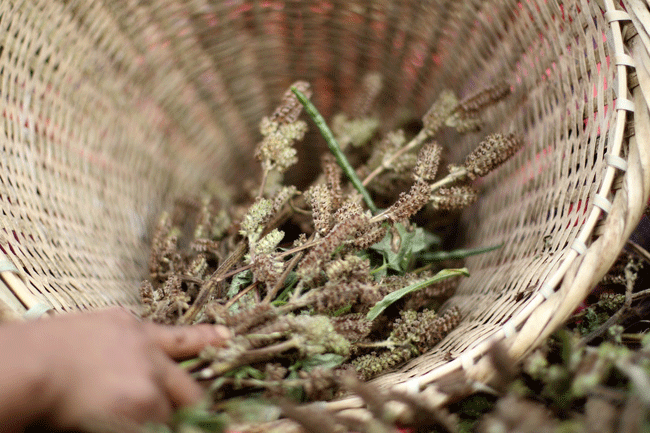
Khonglam harvests sesame seeds from her jhum field. “If I grow just one crop, where would I get rest of our food from?” she asks, noting her reservations about monocultures.
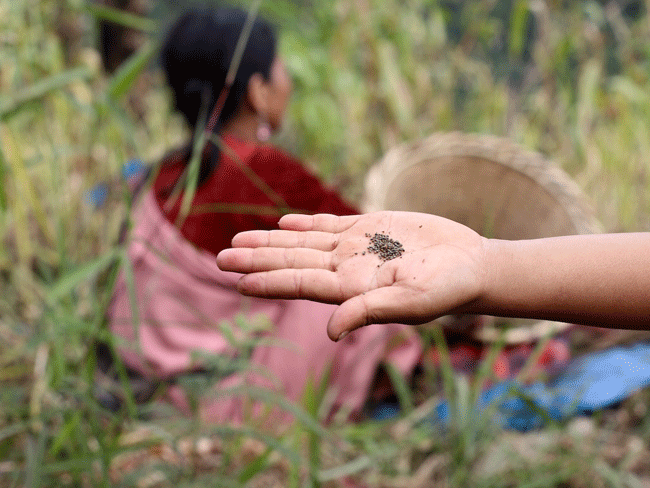
Women are also the seed savers, playing a vital role in preserving the immense agrobiodiversity of the region. Farmers in Nongtraw have also revived their tradition of growing millet—a nutritious grain that was marginalized by India’s Green Revolution. “Women are conservers of seeds and know when each grain has to be sown. They exchange seeds and if today we still have been able to conserve the indigenous seed species, which are hardy and can resist the vagaries of climate change and its extreme temperatures then women are singularly responsible for that conservation effort,” Mukhim said.
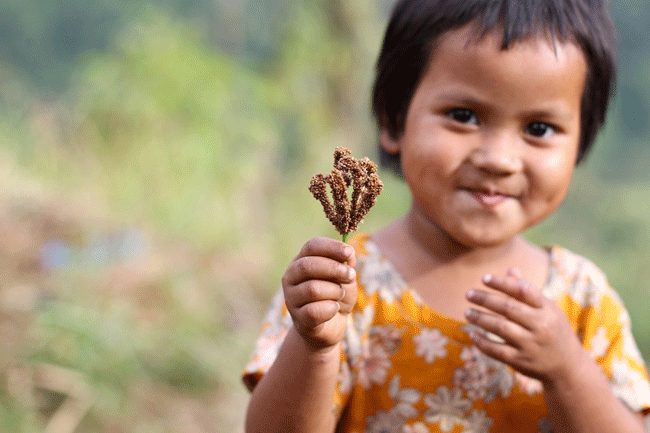
Khonglam’s daughter poses with finger millet, a nutritious grain that is packed with protein and minerals. Mentoring the next generation of indigenous farmers and revitalizing pride in traditional farming is an important priority for advocacy groups like NESFAS.
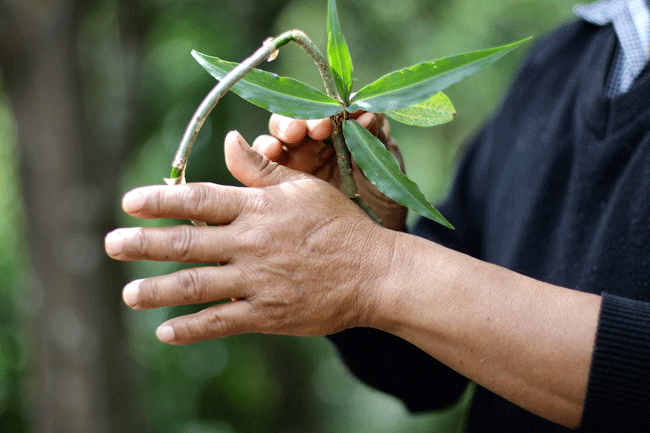
Ranee’s home garden has many medicinal plants. In this photo, a relative shows how his wound was healed using a combination of two plants from the garden that are known for their blood-clotting properties.
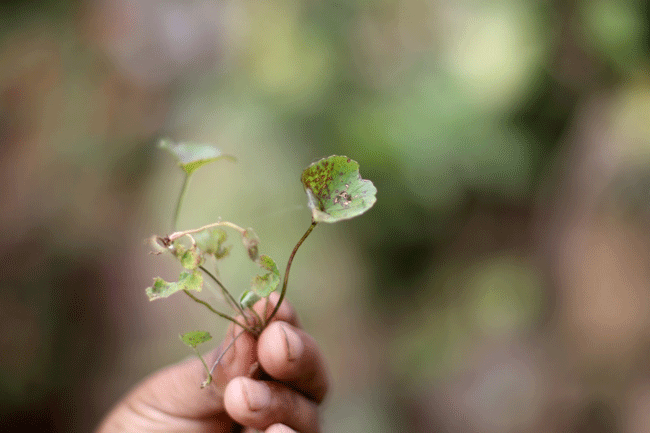
Another herb, kynbat pyllon, in Ranee’s garden is used to cure stomach ailments.
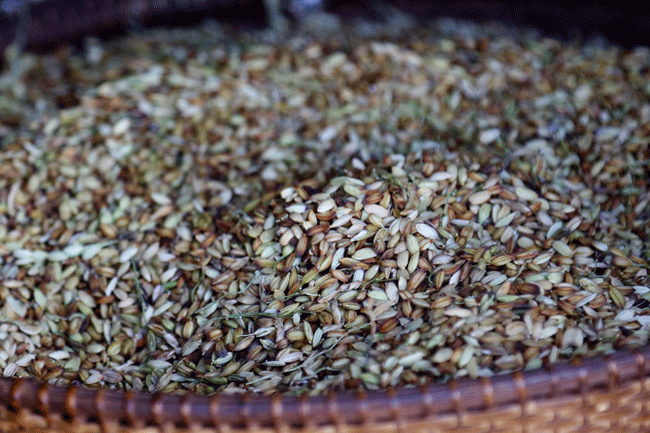
Traditional varieties of hill paddy are in decline in many parts. But there’s hope for revival; 14 varieties of local rice were found in a Jaintia village and food justice groups are working to revive more varieties.
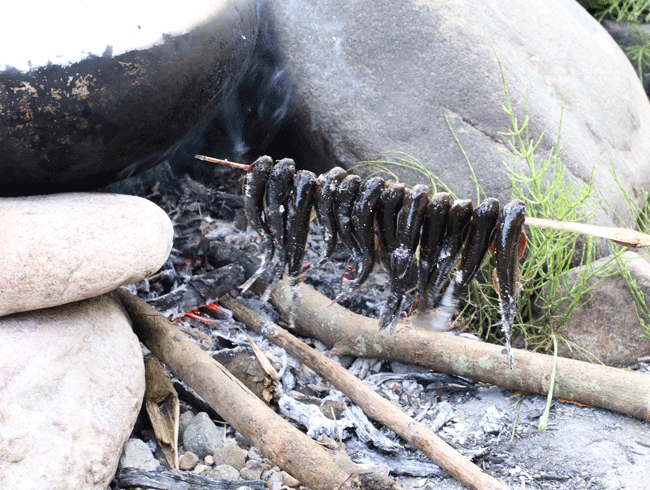
11 varieties of indigenous fish are found in a river that flows below Nongtraw. Communities use baskets to catch the fish, and fishing is regulated by village rules.
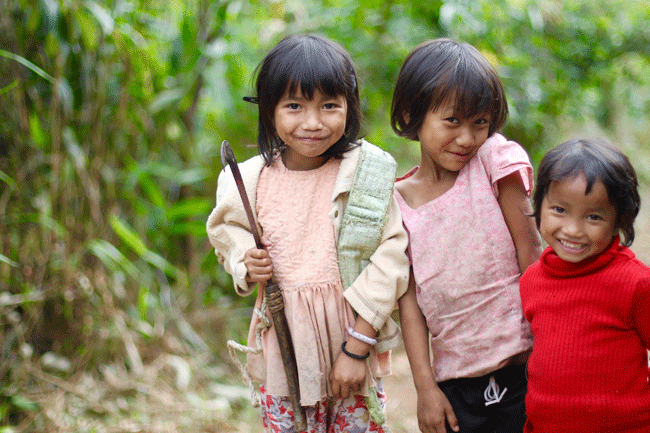
Ranee believes it’s important to instill pride in indigenous youth in their unique food culture and deep connection with nature.

Indigenous dancers showcase their traditional harvest dances at Indigenous Terra Madre in Shillong, Meghalaya in November.
Rucha is a San Francisco-based photojournalist and writer, whose stories highlight the power, dignity and counter narratives of women and grassroots movements. Her photo essays explore how women of color, indigenous peoples and farmers are reclaiming their stories, debunking the dominant victimization narrative and are shaping their futures and destinies by promoting women’s and indigenous rights, racial justice and people-centered resiliency efforts. You can read her published stories and photo essays at A Woman’s Lens. Follow her on Twitter: @RuchaChitnis.
About the author(s)
Guest Writers are writers who occasionally write on FII.



